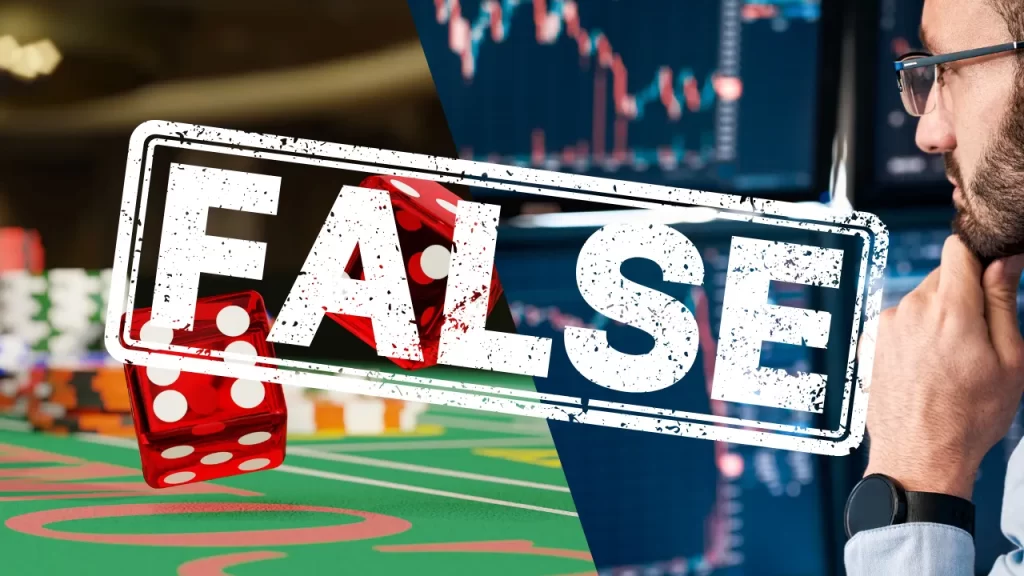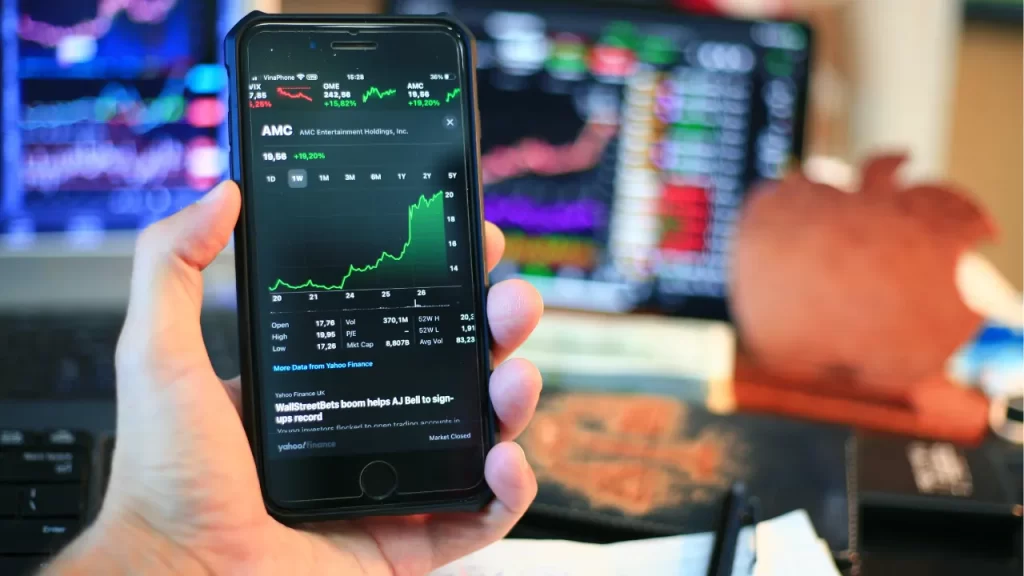Contracts for Difference (CFDs) allow traders to profit from the price movements of various financial instruments without owning the underlying assets.
Despite their benefits—such as the ability to trade on margin and capitalize on both rising and falling markets—CFDs have been misunderstood by many.
This confusion has led to several widespread misconceptions that may discourage potential traders or create unrealistic expectations.
In this guide, we’ll explore these myths and set the record straight so you can approach CFD trading with clear, informed insights.

Myth 1: CFD Trading Is Just Like Gambling
The Misconception
Many believe that CFD trading is essentially a form of gambling—where outcomes are purely based on luck rather than skill or strategy.
The Reality
- Informed Decision-Making: Successful CFD trading relies on analysis, research, and strategic planning. Traders use technical and fundamental analysis to make educated decisions.
- Risk Management: Unlike gambling, where the odds are fixed and uncontrollable, CFD traders can use stop-loss orders, position sizing, and other risk management techniques to control potential losses.
- Market Dynamics: CFD trading is influenced by market fundamentals and economic indicators, making it a disciplined form of trading rather than random chance.

Myth 2: You Can Get Rich Quickly with CFD Trading
The Misconception
Some traders enter CFD markets with the expectation of rapid, substantial profits, often fueled by stories of overnight success.
The Reality
- High Risk, High Reward: While leverage can amplify gains, it also magnifies losses. The potential for quick profits comes with equally high risks.
- Learning Curve: CFD trading requires time to learn market dynamics, develop effective strategies, and understand risk management. Quick success is rare and usually unsustainable.
- Discipline and Consistency: Successful trading is built on long-term discipline and consistent strategy execution rather than chasing quick, unpredictable wins.

Myth 3: CFDs Are Too Risky for Beginners
The Misconception
There is a common belief that CFD trading is only for experienced traders due to its high-risk nature, making it unsuitable for beginners.
The Reality
- Educational Resources: Many brokers provide comprehensive educational tools, demo accounts, and tutorials that help beginners understand CFD trading without risking real money.
- Controlled Exposure: Beginners can start with small, controlled trades to learn the ropes and gradually build their experience.
- Risk Management Tools: With the right risk management strategies, even new traders can navigate CFD trading more safely. Understanding how to use stop-loss orders and proper position sizing can significantly mitigate risk.

Myth 4: CFD Trading Is Not Transparent and Is Like a Scam
The Misconception
Some people think that CFD trading is shrouded in secrecy, with brokers hiding fees and operating under shady practices.
The Reality
- Regulated Markets: Many CFD brokers operate under strict regulatory frameworks, which enforce transparency in pricing, fees, and operations.
- Clear Cost Structures: Reputable brokers openly publish their spreads, commissions, and overnight fees. Traders are encouraged to read the fine print and understand all associated costs.
- Client Protections: Regulation in major markets ensures that brokers follow stringent guidelines, offering a level of protection and transparency to traders.

Myth 5: You Need a Huge Amount of Capital to Trade CFDs
The Misconception
It’s a common belief that CFD trading requires a large initial investment, making it inaccessible for small investors.
The Reality
- Leverage Benefits: One of the key advantages of CFD trading is the ability to trade on margin, which means you only need to deposit a fraction of the full trade value.
- Scalability: CFDs allow traders to start with smaller amounts of capital and scale their positions gradually as they gain experience and confidence.
- Accessible Platforms: Many brokers cater to traders with varying capital sizes, offering flexible account options and low minimum deposit requirements.

Myth 6: All CFD Brokers Are the Same
The Misconception
Another myth is that all CFD brokers operate in a similar manner, so the choice of broker doesn’t really matter.
The Reality
- Varied Offerings: CFD brokers can differ significantly in terms of fees, platform usability, regulatory oversight, customer support, and educational resources.
- Due Diligence: It’s important to research and compare brokers to find one that aligns with your trading needs and offers a reliable, transparent trading environment.
- Regulatory Standards: Brokers regulated by reputable financial authorities are more likely to provide a secure and fair trading experience.

How to Navigate These Myths and Trade Wisely
1. Educate Yourself
Invest time in understanding the mechanics of CFD trading, market analysis techniques, and risk management strategies.
Many brokers and financial education websites offer free resources and demo accounts to help you learn.
2. Start Small
Begin with a small investment to test your strategies and get comfortable with the trading platform.
This minimizes risk while you build confidence and expertise.
3. Use Risk Management Tools
Implement stop-loss orders, diversify your trades, and never risk more than you can afford to lose. A disciplined approach is essential for long-term success in CFD trading.
4. Choose a Reputable Broker
Do thorough research before selecting a CFD broker. Look for brokers that are regulated by recognized financial authorities and have transparent fee structures.
Conclusion
CFD trading, like any other form of trading, comes with its challenges and risks, but it is not the gambling den of uncertainty that some myths suggest.
By debunking these misconceptions, you can see that CFD trading is a sophisticated financial tool that, when used wisely and with proper risk management, can be a valuable part of your trading strategy.
Remember, the key to successful CFD trading is education, discipline, and continuous learning.
As you gain more experience and deepen your understanding of the markets, you’ll be better equipped to separate fact from fiction and make informed trading decisions.






